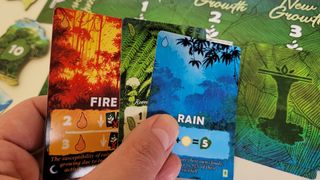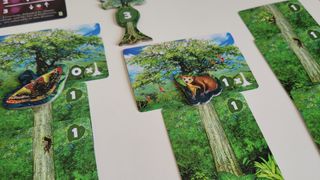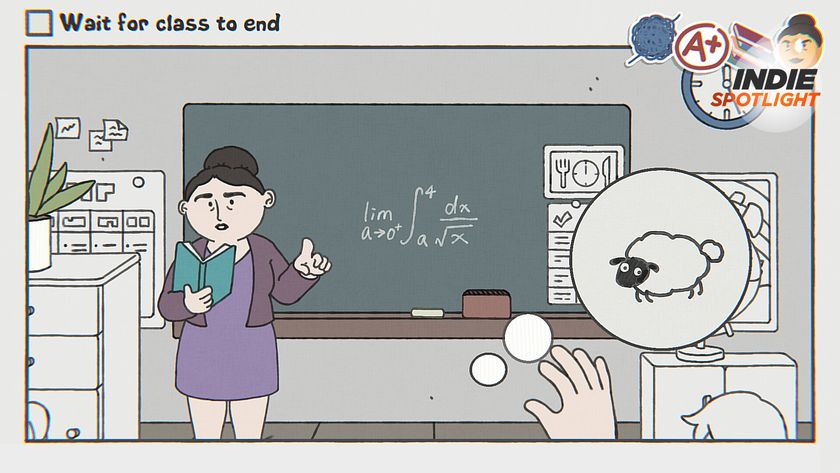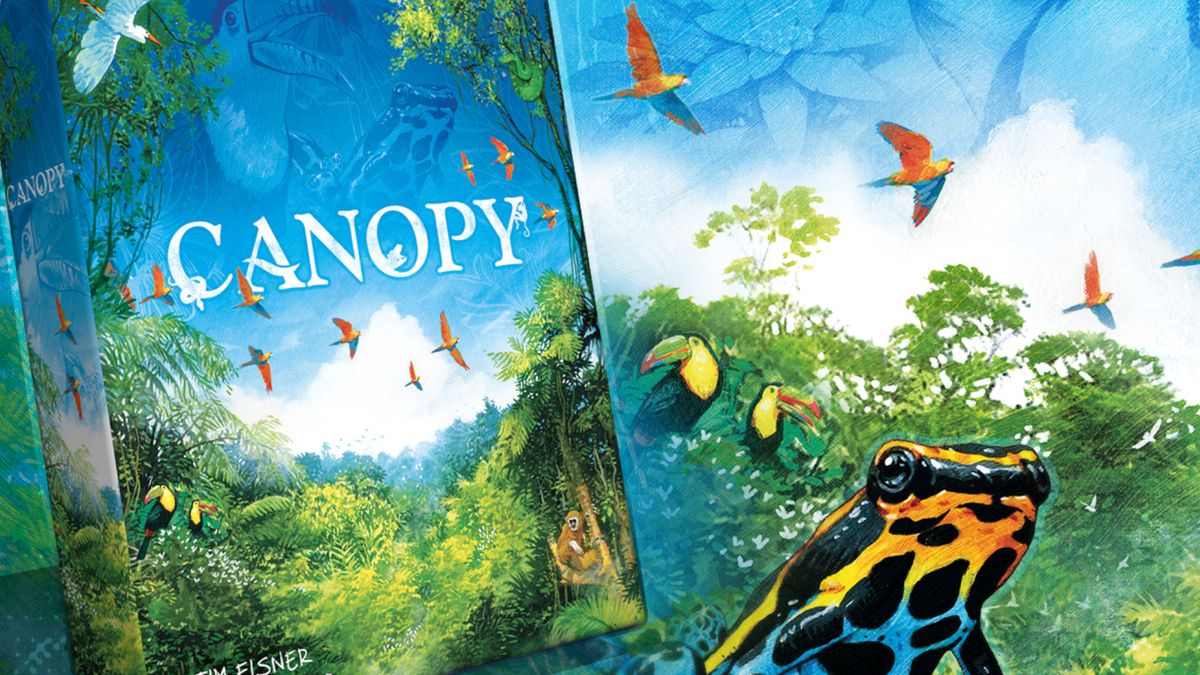12DOVE Verdict
A clever drafting mechanism and gorgeous rainforest artwork make Canopy a worthwhile curiosity for your collection.
Pros
- +
Unique drafting system
- +
Good balance of risk and reward
- +
Lovely rainforest art
Cons
- -
Frustrating randomness
- -
Requires a lot of space
Why you can trust 12DOVE
Canopy proves that card drafting, where you’re given a selection of cards, choose one, and pass the rest on to the next player, is a fun and underused mechanic. You get the challenge of picking a card to try and construct a set, or hand, not knowing what you might get passed in turn. Better yet, you get the schadenfreude of passing a load of rubbish to your neighbour.
Good as it is, it doesn’t work so well in board games for two players because the pair of you just keep passing the same stack of cards to each other. Canopy, however, has found a solution to that problem, giving you all the fun of the draft with your nearest and dearest as a board game for families, as well as providing multiplayer and solo variants.
What is it, and how does it work?

- Game type: Push-your-luck
- Players: 1 - 4
- Difficulty: Moderate
- Lasts: 30 mins
- Ages: 8+
- Price: $29 / £30
- Play if you enjoy: Photosynthesis, Ra, Sushi Go
At the start of the game, you’ll shuffle a big pile of cards and divide them into three, one to use in each season, or round, of the game. You then deal cards off the top of the first season pile to make three smaller piles of one, two, and three cards respectively. Your goal is to collect scoring sets of rainforest plant and animal cards and grow trees while trying to avoid negative cards such as drought or disease. To start your forest off, you’re also given a free tree trunk card.
Play is very simple. On your turn, you look at the first small pile and decide if you want the cards in it or not. If you do, take them and add them all to your growing forest. If not, add a card to the pile you’ve passed on, then look at the second pile and decide if you want those, then the same with the third. But there are no take-backs in Canopy: once you’ve passed on a pile, you’ve lost your chance to claim it that turn. If you pass on all three then you get a random card off the top of the deck.

The sets you’re trying to collect are devious in the various ways they score points. Take Bromelia cards, for example. If you have one in your forest, it’s worth two points at the end of the season. Two such cards are worth seven points. But if you get three, then the set subtracts three points from your score. Most plant sets are similar in the sense that the score rises and lowers depending on how many you have.
Trees are different. There are two flavours of tree cards, trunks and canopies. Each trunk can either be used to start a new tree or increase the height of an existing one without a canopy. If you draw a canopy card you have to use it to complete a tree, whereupon it scores the points values of each trunk card and a multiplier for the canopy card, both of which can be zero. The kicker is that you’re pushed in both directions: each round there’s a reward for the tallest tree and at the end game there’s a fat bonus for having the most trees.
Within that rapid action, there’s a wealth of interesting decisions to make
Other cards include sun and rain, each pair of which is worth five points. There are also animal cards which also come in pairs, although you don’t need both to get benefits from them: one is worth points, the other has a special ability you can use once per season such as the Boa which lets you take a card from a pile that you’ve passed on. Seeds let you draw several cards and pick one from the seed deck at the end of the season, a useful well of extra trees and plants you can use to try to complete your sets.
Negative cards remove other cards from your forest: disease kills animals, for example. But they’re not always bad news. If you can get enough disease cards, it spreads, sparing some of your animals and infecting other players. Fire destroys plant cards but that can help you get rid of bad cards like that third Bromelia, and it also encourages seeds to grow.
Gameplay - is it any good?
Canopy’s drafting concept is unusual and effective. Play is fast as you inspect each pile, assess it, and move on. But within that rapid action, there’s a wealth of interesting decisions to make. There are obvious times when you want a pile because it benefits the forest you’re trying to build, but there’s also the temptation to take a pile just to deny it to your opponent. However, if you do that, will some of the cards impact your own tableau for the worse?
And that’s just the root of the expanding tree of possibilities. Piles that get left, perhaps because they contain a bad card, get bigger, making them more and more tempting to risk picking up. And as they do so, there’s also the temptation to get in there and grab the goodies before your opponent does so, if you feel the balance of good outweighs the bad. After all, that fire might help you, or you might get enough disease cards to make it spread.

In this, Canopy is reminiscent of a much older auction game called Ra which tempts players with an ever-growing lot of both good and bad effects. It has a delicious tension between bidding for the mix of effects or watching them grow, and Canopy replicates that very well. Each card on each pile winds the tension up just that bit more as you wonder whether to take it now or risk leaving it to your opponent, a tension that’s increased because each added card is unknown. It might have pushed the pile into must-have territory or it may not. But by the time you know, it could be too late.
The excitement factor is increased by the way each pile you pick up might or might not have the ideal cards in it you need to up your score. Maybe the next one will have the second animal in a pair that’ll net you a fat point bonus. Maybe it’ll have a disease that’ll kill the wildlife you already have. This gives Canopy a strangely addictive quality, that same joy of hunting and finding rare games for your collection in microcosm.
The great art does make your massive tableau look green and glowing as it expands
However, that strategic uncertainty over how far to risk it is essentially all Canopy has. As with all push your luck games, there’s a significant random factor here which can be frustrating. And, at the back of your mind, there’s a constant sense that the decisions of passing or taking each pile could be for nought as you have no real way of knowing what will work out for the best. The game is also a surprising table hog as your forest of trees grows and grows toward the game end, but the great art does make your massive tableau look green and glowing as it expands.
Overall - should you buy Canopy?
Despite Canopy’s clever drafting mechanism, it suffers from being in a crowded category of fast, two-player games, in which there are huge gems like Targi and Jaipur (the latter of which tops our best card games list). But that’s kind of the wrong way to look at this game because, unlike its competitors, it can be played with more, or even solo, and can satisfy at those player counts too. That makes it much more flexible, and more worthy of a potential space on your shelf if its combination of slight novelty, light strategy, and lush rainforest art appeals.
Matt is a freelance writer specialising in board games and tabletop. With over a decade of reviews under his belt, he has racked up credits including IGN, Dicebreaker, T3, and The Guardian.

Despite Zelda: Majora's Mask basically being a horror game, one of its key devs didn't think its creepiest features were scary at all: "People on the team were like 'whoa!'"

Corsair exec says GTA 6 is coming to PC in early 2026 and then quickly un-says that

This puzzle game has done the impossible: waiting around for something to happen has never, ever been this fun
Most Popular





